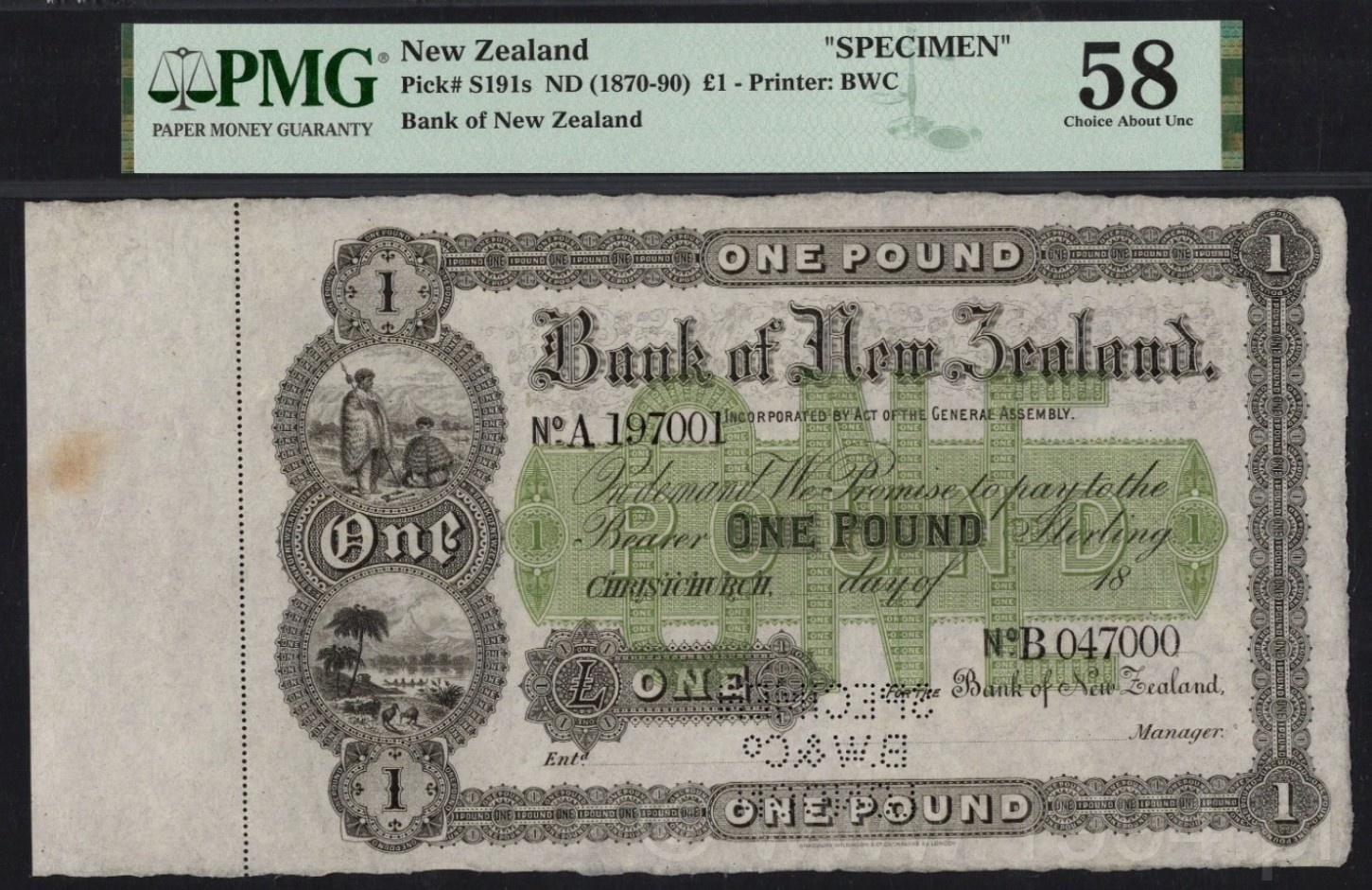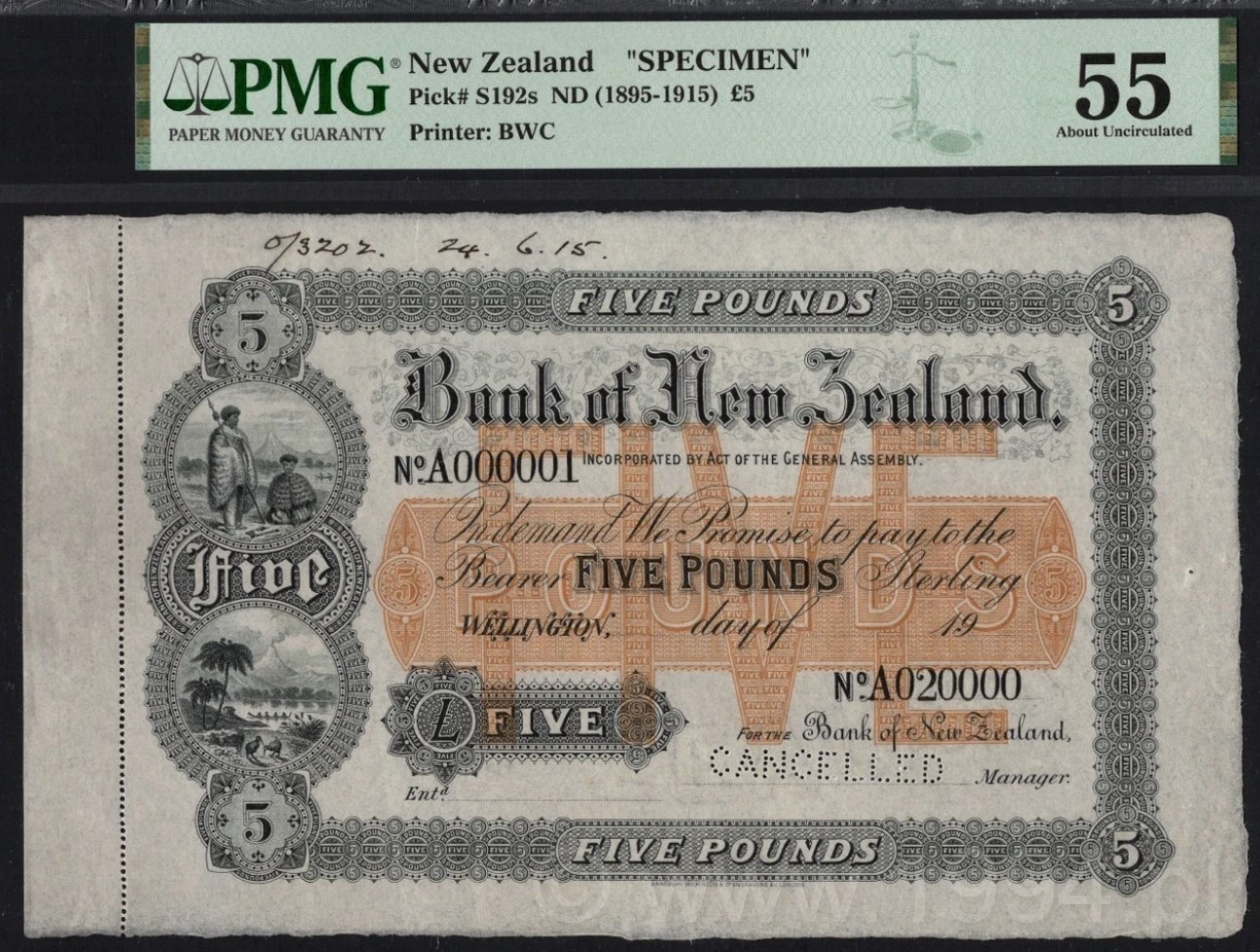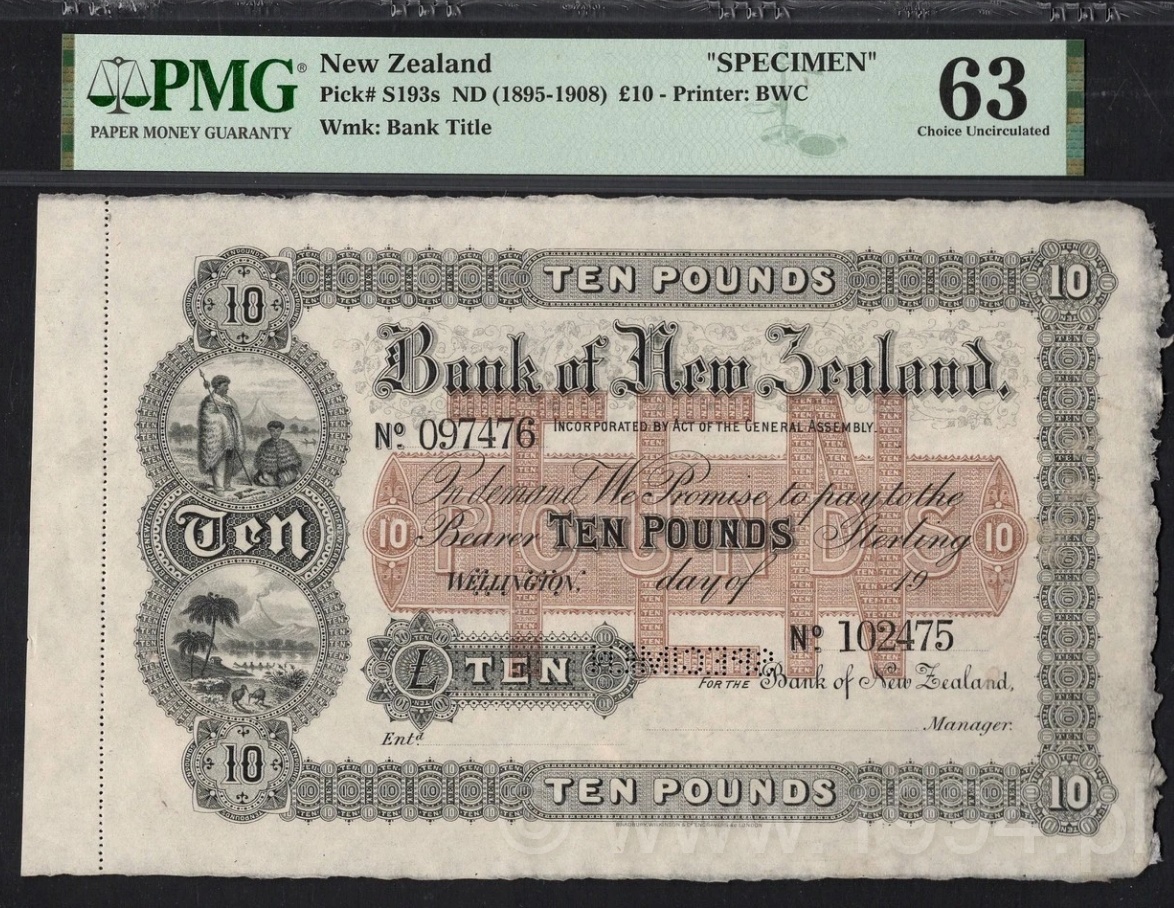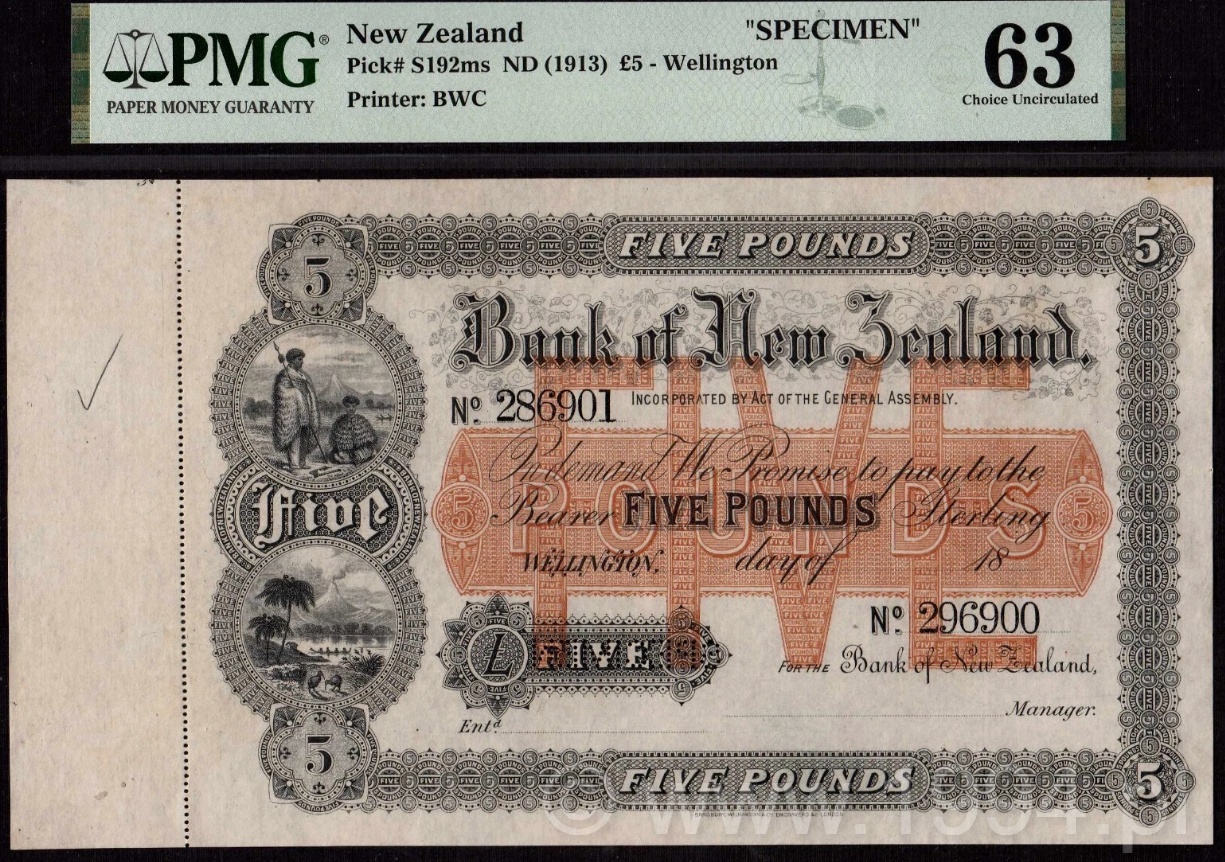Collection
AboutBank of New Zealand — complete pre-Reserve specimen lineage (1870–1916)
New Zealand’s banknotes did not begin life as a government monopoly. Through the 19th and early 20th century, a handful of trading banks issued their own notes under statute, with the Bank of New Zealand (BNZ, founded 1861) the most prominent by reach and volume. In that world, a note was both a promise and a billboard: it had to clear in distant towns, win public trust after periodic credit shocks, and meet London’s standards when bills were settled across the Empire.
To build that kind of credibility, BNZ turned to London’s Bradbury, Wilkinson & Co. (BWC), whose steel-engraved house style—tight guilloche, strong allegory, and conservative lettering—became the visual grammar of New Zealand paper money before centralization. The five specimens below are not random survivors: together they map how BNZ’s look matured from late-Victorian to Edwardian practice, showing color logic by denomination, serial/approval conventions, and evolving cancellation controls that kept printer files and bank archives orderly.
Shown here is that lineage: the £1 Green (Pick S191s, ND 1870–1890), the £5 Orange (Pick S192s, ND 1895–1915), the £10 Brown “with serial-prefix” (Pick S193bs, ND 1895–1908), the £5 Orange multi-serial approval specimen (Pick S192ms, ND 1913), and the £1 Red “with serial-prefix” (Pick S212bs, ND 1905–1916). Read them not as five isolated objects, but as a design system in motion.





What this lineage shows. Color coding strengthens across time (green → orange → brown → red), typography tightens, and cancellation methods move from simple punch controls to explicit CANCELLED perforations and marked prefixes. Serial-prefix and multi-serial practices reveal how BNZ and BWC kept proof rooms auditable. Taken together, these specimens are a blueprint for how New Zealanders learned to read value at a glance.
Why these are rare. Private-bank specimens were working tools—reference models kept by printers, auditors, and correspondents. They were not made for collectors. Most were destroyed when contracts lapsed or when centralized policy made them obsolete. Surviving BNZ examples—especially with selvage, pencil plate notes, live prefixes, or multi-serial approval numbering—tend to be ex-archive, scattered by later dispersals. As a coherent sequence, they’re seldom seen outside institutional files.
Historical frame. Trading banks (BNZ among them) issued notes under New Zealand statute throughout the 19th and early 20th centuries. The Reserve Bank of New Zealand Act, 1933 (operations 1934) ended private note issue and unified design and security under a single authority. This lineage captures the last decades before that shift—when London engraving and colonial banking needs met on New Zealand paper.